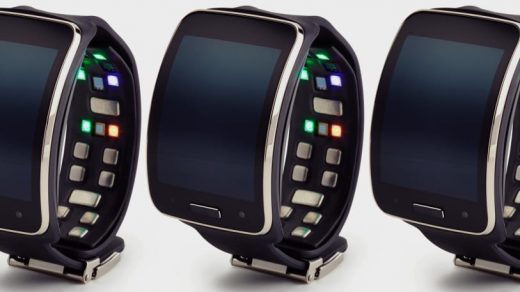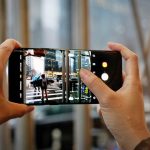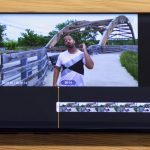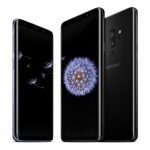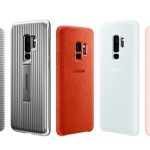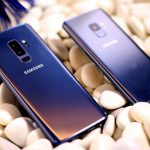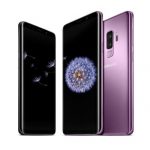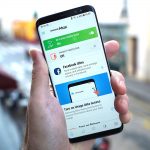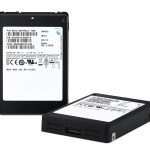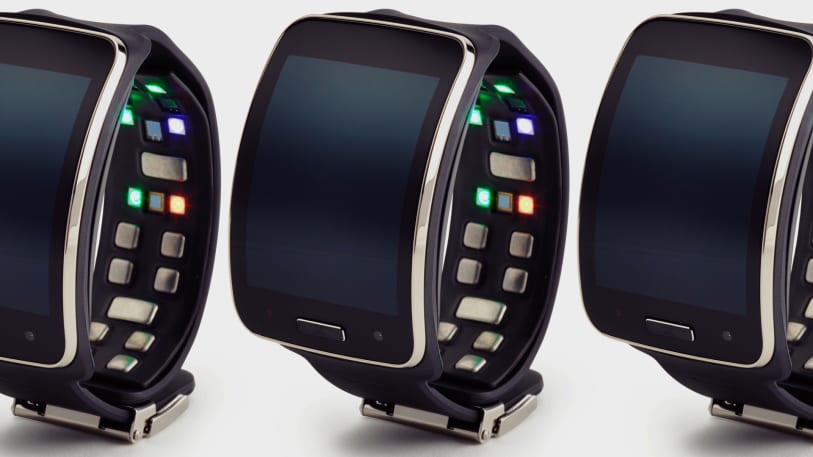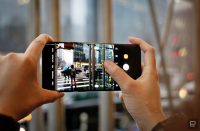How Samsung’s Simband Tried to Preempt The Apple Watch (And Why It Didn’t Work)
It was May 28, 2014. Wearables were hot. The tech industry was fixated on digital health and the concept of using on-body sensors to collect data about the “quantified self.” Hype about the as-yet-to-be-announced Apple Watch was getting louder, and lots of people thought that Apple might unveil it at the WWDC developer conference, just a week away.
That was the day that Samsung, which already had two smartwatches on the market, chose to hold a splashy Voice of the Body event at the SFJazz Center in San Francisco. With no details about the gist of its announcement available ahead of time, pundits wondered: Would the company announce an advanced health wearable and steal the Apple Watch’s thunder?
That’s exactly what Samsung wanted to do. But what it unveiled that day was something different than expected. Instead of a new consumer wearable, the company trotted out something that looked more like a research project.
It was “Simband,” a prototype watch with a band that could be fitted with a custom set of advanced health sensors. The personal health data collected by the sensors, we were told, would be stored in a secure cloud platform called SAMI.
The prototype version of Simband had a couple of sensors that were more accurate and clinically relevant than anything else on the market. One sensor module measured PPG (photoplethysmography) and ECG (electrocardiography), and, by extension, blood pressure.
The Samsung executive in charge of Simband, Ram Fish, did the sales pitch and the demo onstage at the SFJazz Center that day. Cast up on the big screen, the watch face of the Simband on Fish’s wrist showed various PPG readings pulsing across the watch face in real time, prompting oohs and ahhs from the audience.
Fish laid out a vision where consumers could use Simband to monitor their personal health and also share certain high-quality sensor data with their doctor via the SAMI cloud.
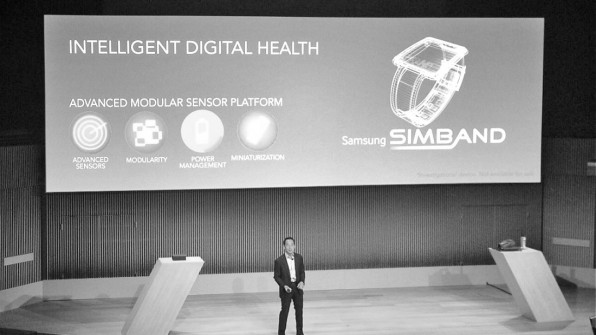
Then the presentation was over. Many of us in the audience weren’t quite sure what we’d seen. Would Simband ever be a real product? Samsung had called it an “investigational” device. If that’s all it was, then why all the branding and an event that felt a lot like a product launch?
There were no clear answers given to those questions at the event, and they never would be. In fact, after that hopeful day, Samsung said very little about Simband and SAMI. As time went on, the possibility that the whole initiative had withered away became real.
I talked to some of the people who built Simband and SAMI about how the initiative came into being, grew into a product group with a working prototype, then lost its way. It’s a classic story of how the sausage really gets made in Silicon Valley—or doesn’t.
None of the people I spoke to for this story bear any hard feelings about the way things turned out with Simband. On the contrary, they seem proud of the work they did. “I thought we built a very credible prototype—as long as you didn’t mistake it for something that it wasn’t,” said Michael Edwards, a former Samsung staffer who worked on the project as a principal software engineer.
“We got it from an out-of-form factor design to a completed prototype that could be used to form an ecosystem,” Edwards said. “Had the work continued, I feel we would have successfully got the product to the next prototype phase.”

Birth Of A Band
Rumors that Apple might build a smartwatch started way back in 2011, giving Samsung plenty of time to think about the competitive implications. The company’s top brass at headquarters in Seoul were indeed worried about the Apple Watch, but perhaps for the wrong reasons.
Those executives feared that Apple could immediately jump way ahead in the smartwatch race by releasing a device with advanced, clinical-grade biosensors, a source with knowledge of the situation told me. The Apple Watch’s sensors, the executives believed, might take health measurements that were far more meaningful than the step counters seen in wearables so far. They thought the Apple Watch’s sensors might be able to deliver highly accurate measurements of things like blood pressure or blood oxygen levels.
In typical Samsung fashion, sources say, the executives in Korea wanted Samsung to beat Apple to the market with its own advanced health wearable. “They especially wanted to get a product announced before the Apple Watch was announced,” one engineer told me.
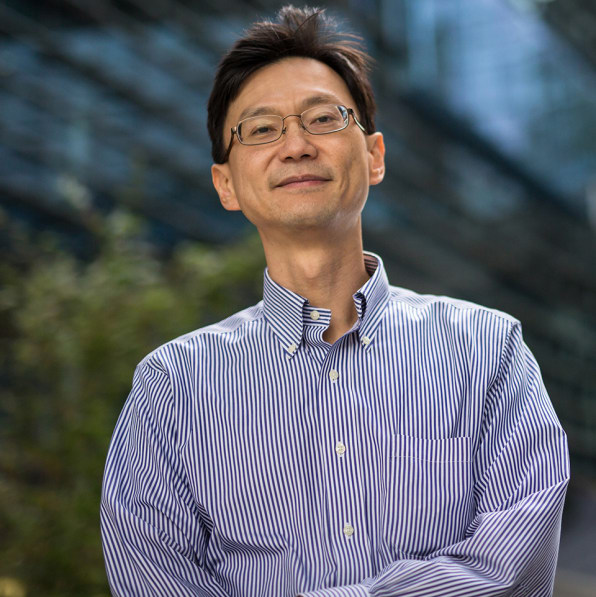
The one current Samsung executive I spoke to for this story, Francis Ho, vice president at the Samsung Innovation and Strategy Center (SSIC), denies that Simband was a defensive act against Apple, at least from his vantage point in Silicon Valley. “No one really knew what they were going to do, to begin with,” Ho told me. “So we were much more interested in playing offense than defense.”
Samsung also believed there was real money to be made in digital health, a nascent category that was attracting hundreds of other companies, from app developers to gadget makers to companies that made smart apparel. The health pavilion at the Mobile World Congress conference in 2014 was packed with wares from such companies. At exhibit after exhibit, “booth babes” running on treadmills demonstrated this or that health band. Samsung wanted in.
“We wanted the product to appeal not just to people with an objective need for it, but to the ‘worried well’ and lifestyle consumers,” said Edwards. “That’s where the practical opportunity was.”
Samsung hoped to create a health wearable that was at once a consumer health gadget and a clinical-grade device that could potentially feed certain data to the user’s health care provider. The original plan was to bring together a set of advanced health sensors that would display data on a display similar to those of the company’s Gear smartwatches. With the strong backing of Oh-Hyun Kwon, who led Samsung’s components business at the time, the project was greenlit in Korea.
Samsung On Sand Hill
The project would be among the first R&D efforts funded and overseen by the new SSIC.
In August 2012, Samsung rented some posh office space in a lawned and forested office park on Sand Hill Road in Menlo Park, where most of the top-shelf venture capital firms are headquartered. Samsung saw the center as a way of heightening its presence in the Valley and getting a closer view of hot new technologies in which it might invest.
The SSIC started as a sort of incubator and venture fund with a billion dollars under management for investments, a source told me. The operation was launched and run by Young Sohn, a well-respected Silicon Valley figure who became Samsung’s only president based outside Korea. At the very beginning, Sohn focused on the Center’s investment portfolio, while Ho focused on hiring.
Digital health was one of five tech areas in which Samsung explicitly wanted to invest, Ho told me. A sizable chunk of the SSIC’s fund would be used to fuel the Simband/SAMI initiative.
Sohn brought to his new role an existing relationship with IMEC, a sprawling European research organization that developed all kinds of microelectronic technology. IMEC had a facility in the Netherlands dedicated to the development of health sensors; this would be the source of the advanced blood pressure sensor module in Simband. Other health Simband sensors were developed by a trio of small Israeli companies: Mantis Vision (3D sensors), SleepSense (sleep sensors), and SensiFree (contactless sensors).
The SSIC would also be home to the small group of engineers who would make Simband and SAMI real. In July 2013, Sohn and Ho brought in Fish to run the project, a hard-charging product guy fresh from a stint leading the iPod group at Apple. “Ram picked it up at a stage when it was embryonic,” said one Simband engineer who asked to remain unnamed. “He was given the authority to form an ecosystem and a prototype.”
Another engineer on the team told me Fish brought with him a sense of style, and a promise that the project could eventually yield a game-changing product. Fish, an Israeli, is a commanding presence who practically exudes forward momentum. By all accounts, he’s a natural builder who likes to push hard to bring the pieces of a product together quickly.
That attitude rubbed off on the Simband engineers. “We thought this could be a big push in digital health,” one source said.
Fish hired more engineers. He worked with executives in Korea. He managed relationships with sensor makers. He was involved, along with Sohn, in the decision to make Simband a modular device with different sensor combinations that could be integrated together in the band to suit whatever application a developer customer had in mind.
Above all, Sohn and Fish sold the team on the idea that Simband was the instrument that could collect and interpret the “small data” (as one executive put it) that bodies continually give off–the “voice of the body” referenced at Samsung’s launch event. The engineers believed the technology they were working on could eventually result in healthier human beings. They gave their nights and weekends to this concept and its expression in Simband.
At its peak, the project employed eight full-time Samsung engineers at SSIC, who spent much of their time coordinating the work of another 50 or so people working full-time on the project at contractors like IMEC.
The engineers were also fired up by the idea that they were working on a real product that would be commercialized. And in the months that followed, Simband began to look less like a pure research project and more like a focused effort that could become a shippable consumer device.
Some Samsung executives in Korea may have thought the Simband group’s work would eventually feed into future Gear smartwatches, but Fish was pushing Simband to be its own thing. And that work was all happening in Silicon Valley, far from Korea.
As 2014 wore on, Samsung was feeling pressured by the forthcoming announcement of the Apple Watch. This put the Simband group in a race against the clock: Many people believed that Apple would finally announce the Watch at its WWDC developer conference in early June 2014. So Samsung scheduled its Voice of the Body event for May 24, a week before WWDC.
In the weeks leading up to the press event, Fish pushed the Simband team hard to get a single prototype ready for the stage presentation. They barely made it, one engineer told me. And the pulse readings dancing across the watch display were indeed based on real-time data flowing from the sensors on Fish’s wrist, although there was some error filtering going on. The charts Samsung’s Luc Julia displayed in SAMI contained real data from Fish’s wrist.
UCSF Medical Center cardiologist Dr. Michael Blum was on hand that day to represent Samsung’s first publicly announced clinical partner. UCSF planned to conduct a clinical study where doctors monitored the heart health of cardiology patients via the Simbands they wore on their wrists. For its part, Samsung needed partners like UCSF that could manage the trials and publish the results in high-profile, peer-reviewed journals.
The Voice of the Body event did stir up some attention among potential developer partners, one engineer on the team remembers. But conversations with most of those developers would ultimately lead nowhere.

A Political Fight
The Simband group was just one of many groups within Samsung working on health-related technology. One engineer told me the company likes to put money behind lots of different research efforts and see which ones get legs. He said the Simband project itself was seen as “a bit of a fishing expedition.” But that perception changed after the Voice of the Body event.
At Samsung, device strategy decisions are traditionally made behind closed doors in Korea. So some executives at headquarters—especially the ones running the company’s mobile devices division—were taken aback when they saw just how far the little research project in Silicon Valley had progressed toward delivering a real product.
Samsung’s mobile group, after all, had its own plans for health products. The mobile group developed the Gear smartwatches and was writing that product’s road map. Simband was a project of Samsung’s components division, the part of the company that sells memory and chips. The mobile group couldn’t understand why it was being put in a competitive posture against a device being developed in a division that wasn’t supposed be making consumer gadgets.
The press event in San Francisco marked the start of a long political contest in Korea to decide which group within Samsung should be in control of Simband. Ho doesn’t deny that this tug-of-war took place, adding that this type of thing isn’t unique to Samsung.
But actually, it may happen at Samsung more than at other tech companies. The company comprises multiple huge businesses, one of its major competitive advantages. “Samsung Electronics is one of the few companies in the world that handles components, digital products, home electronics, and communications businesses under one roof,” Samsung Group Chairman Kun-Hee Lee once said. “These divisions cooperate with and support each other.”
But they also compete. “Coopetition” is usually used to describe a condition where separate companies simultaneously cooperate and compete. But the same condition exists between groups within Samsung, according to a study by Jaeyong Song, Kyungmook Lee, and Tarun Khanna at Berkeley’s Haas School of Business. “In Samsung’s case, the coopetition model applies to affiliate companies within a diversified business group, as well as to business divisions within those affiliate companies,” the authors wrote.
The SSIC had been set on a competitive course with the mobile group when it began to develop a health wearable. Yet it’s also true that the Simband engineers at SSIC had been getting support and technology from the engineers in the mobile group in Korea.
When the dispute flared up after the press event, the mobile group won some control over Simband in a kind of split decision. The Simband team in the U.S. was told to replace the Ubuntu operating system it had been using in Simband with Samsung’s Tizen OS. The executives in Korea decided that if Simband’s development was funded by Samsung, the device should run on an operating system owned by Samsung.
This was a reasonable decision, but it took away some of the Silicon Valley group’s independence, and sapped some of its mojo.
Making Progress
In the weeks after the event, things began to click back at SSIC. Software engineers began to port the Simband platform over to Tizen, but engineer Michael Edwards told me that this work didn’t slow down the work happening in other areas.
“We started to hit our internal goals,” another engineer on the team said. “We were starting to make progress on the work to integrate Simband with SAMI.”
And the SAMI service needed a lot of work. It had barely been touched before the Voice of the Body event, one engineer told me. Part of Samsung’s proposition to developers was a secure data platform where data collected by the Simband could be stored with confidence. This required the creation and management of an authentication system that connected a user ID with a device ID with a corresponding ID for data stored by the user/device in the cloud. That entailed a huge amount of work on both the device and cloud sides.
At the regulatory level, most developers begin designing and building health devices with HIPAA privacy and Food and Drug Administration safety guidelines in mind very early in the process. Yet Samsung had barely addressed it when it went public with Simband and SAMI in May 2014.
Samsung, Edwards says, “couldn’t suggest that we were building a medical device without inviting FDA scrutiny,” Edwards said. “Our goal was not to promote a ‘clinical’ road map, but to justify calling it a ‘clinical-quality data source’ for personal use.”
There were serious scaling problems, too. “We didn’t have a design that scaled up easily to manufacturing hundreds of thousands or millions of units,” Edwards told me. “Production of the devices required too much skilled labor, and the result was exquisitely fragile.” The Simband was manufactured by Flextronics, but never in production runs of commercial size.
And yet, by the time Samsung’s developer conference rolled around six months later, in November 2014, the hard work of the Simband team was apparent. The Simband/SAMI presentation was much smoother and more detailed. The SAMI integration was more refined. Samsung announced that it was releasing a software development kit to developers interested in building on the Simband/SAMI platform.
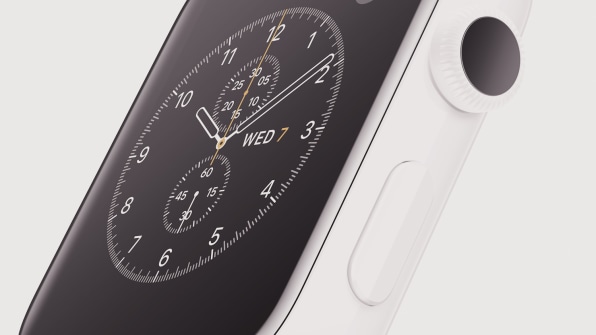
And that was the last we heard about Simband and SAMI for a long while. What happened? In the interim, the wait for details on Apple’s massively hyped smartwatch finally ended on September 9, 2014, roughly three months after the Voice of the Body event.
For the Simband/SAMI initiative at SSIC, the announcement of the Apple Watch was when “the air went out of the tires,” as one engineer put it. The project lost much of its reason for existing.
It wasn’t because the Apple Watch was unbeatably awesome. On the contrary, it was because Samsung had overestimated its strategic threat. Korea’s fear that the Watch might contain advanced clinical grade sensors was misguided. It didn’t. Apple’s device offered a relatively tame set of consumer-focused biometric measurements. Its heart rate sensors were high quality and accurate, but did nothing ambitious like measure blood pressure.
When Apple announced the Watch, some at Samsung in Korea breathed a sigh of relief. Apple hadn’t leapt into the lead with the Watch’s sensors. It’s possible that Apple had the technology to do more advanced health measurements, but chose to steer clear of them because of factors such as the FDA scrutiny they would bring and the legal risk of giving users data that might be interpreted as “medical advice.”
If Samsung had its choice, it would rather avoid the regulatory headaches, too. One engineer source told me that the company’s real interest was producing a low-cost health watch with some fancy sensors that it could sell in FitBit-like volume to consumers. If that was the real goal, the Simband, with its sophisticated sensors, had badly overshot the mark.
With the Apple Watch threat minimized, other issues with the Simband project came into sharper focus. Samsung traditionally doesn’t like long research projects that don’t quickly begin to bring in revenue. And the Simband/SAMI initiative, because of the nature of its applications in health care systems, required a protracted allotment of capital, research, and patience.
It’s unclear if the Simband project was defunded after the Apple Watch appeared, but key Simband team members began to leave. Fish, tired of the ongoing dispute in Korea for control of Simband, finally left the project and the company in September 2015.
Things hadn’t progressed very far in the cardiology department at UCSF, either. Samsung hoped that after some initial testing of the device on volunteers, the department would take Simband into clinical trials to measure its effects on the health of real patients. While people associated with Simband were hesitant to talk about it, I found no evidence that any clinical trials involving Simband ever took place at UCSF. No research was published.
Ho said that some Simband devices were eventually delivered to UCSF, and that there was some initial testing of the Simband worn by volunteers. But my sources told me that no patient at UCSF was ever outfitted with a Simband, and no live data was collected. Blum did not respond to questions about the Simband.
I could find no research published about Samsung testing the Simband on patients at the Samsung Hospital in Korea.

Simband Today
The Simband project still bears the outward appearance of a going concern. The website is still up. There’s still a form where developers can sign up to conduct research based on the band. A quick LinkedIn search shows there are still people at SSIC working on Simband, at least part of the time. Ho declined to tell me how many people are actually working on the effort. The SAMI cloud storage platform was rolled into Samsung’s Artik cloud platform for the Internet of Things (IoT).
Ho also points to one 2016 study at Emory University where doctors used the band to monitor heart patients for arrhythmia. The researchers said in a paper that Simband’s sensors could detect arrhythmia with enough accuracy to make their use valuable in the care of heart patients. One of the principal researchers at Emory told me the research with Simband is over, and that his team has no plans for further study using Samsung’s device.
The last press release about Simband came out last year. It announced that Samsung had formed a partnership with food giant Nestlé. The details of the partnership remain a bit vague, but the two hope to give consumers insights on their diet using Samsung’s sensor expertise and Nestlé’s wealth of knowledge about food.
Ho still has big plans for the application of Simband in clinical settings, too. He doesn’t have to hesitate to think when he describes what success might look like: “It’s rolled out; maybe it’s approved by some reimbursement plan, maybe it’s sponsored by your employer, and we have it [available] to millions of people,” Ho told me. “That’s our dream.”
It’s hard to tell exactly how serious Samsung remains about chasing its “Voice of the Body” vision. Ho declined to tell me whether or not SSIC is investing as much in Simband as it was in 2014. But he did tell me that a month ago, Samsung asked him to personally oversee digital health projects at the SSIC.
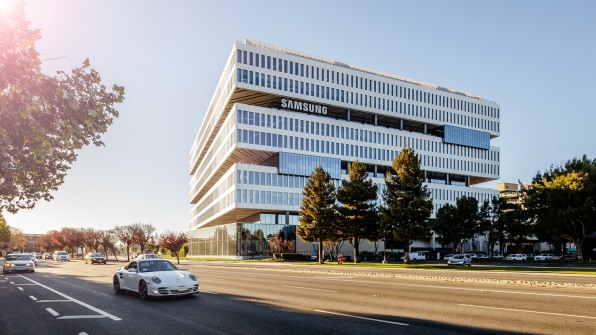
Ultimately, the Simband story is interesting, not because it’s unusual, but because it’s so typical of the behind-the-scenes dynamics that define Silicon Valley. Projects get hatched, and they can float around for years, championed by individuals or small groups, looking for a home where funding, incubation, acceleration, talent, and TLC are available. Sometimes, if the politics and market conditions happen to be right, an idea can become a real product. Other times the core idea can go into a dormant state, only to reemerge when conditions have changed. Sometimes the champions of a concept leave and take their work with them to search for a new home.
The possibilities are as various as the thoughts and ambitions of human beings. It’s all part of the idea economy of the Valley, and it never stops.
Fast Company , Read Full Story
(106)

